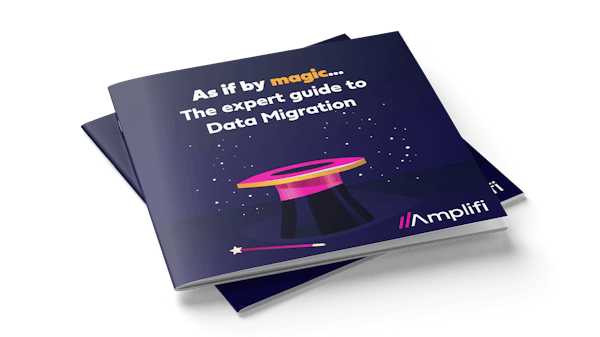Common challenges in data migration
Dealing with diverse systems and formats
Data migration often means working with a wide range of systems and formats, each with its own quirks. Legacy systems might have outdated or unsupported schemas, while newer platforms come with their own specific requirements. Bridging the gap between these systems isn’t always straightforward and can lead to issues if not handled properly.
Manual processes are error-prone
Relying on manual methods for migration increases the risk of mistakes. These could range from duplicate entries to missing or corrupted data. Fixing these issues later can be costly and time-consuming, and they can disrupt business operations in the meantime.
Maintaining data quality and integrity
Ensuring that your data stays accurate, complete, and accessible throughout the migration process can be challenging. Without robust data quality processes, there’s a risk of ending up with unreliable data that impacts your ability to make informed decisions.
Resource sharing
Resources are often stretched between migration and validation tasks. SMEs may need to validate data while managing other responsibilities, creating bottlenecks and delays. This shared workload can slow progress and increase the risk of errors without effective management.
AI-powered solutions in data migration
AI is transforming data migration by tackling the trickiest and most time-consuming parts of the process. One of the biggest challenges is dealing with messy data as errors, duplicates, and inconsistencies that can throw everything off course. Instead of relying on manual checks, AI scans huge datasets, picks up on issues early, and flags them before they cause problems. This means teams can fix things proactively, keeping the migration on track and avoiding last-minute surprises. It’s a smarter, faster way to handle data and makes the whole process a lot smoother.
AI is making data migration smarter and more efficient by taking on the heavy lifting. Instead of relying on manual coding to transform data, AI applies rules automatically, ensuring everything aligns with the target system’s requirements without the risk of human error.
Enhancing efficiency and accuracy with AI
From reducing errors to streamlining workflows, AI ensures smoother, faster, and more accurate migrations. Below are key areas where AI makes a significant impact:
Change error reduction
Even the best-planned migrations can run into unexpected delays, system outages, or last-minute changes. AI can monitor amendments within data sets and refer to defined data governance policies, to raise changes or risks faster and more efficiently. This helps to keep things on track by dynamically adjusting plans, reassigning tasks, updating timelines, and most importantly, effectively communicating to relevant stakeholders, reducing the risk of failures.
Source-to-target mapping is another area where AI steps in to reduce errors. By analysing metadata, AI flags mismatches early, suggests transformations, and ensures data is properly prepared for migration. This means teams only need to focus on the issues that truly require SME input, reducing failure risks and freeing up time for higher-value tasks.
Accelerated validation
Data validation can be a long and tedious process, often requiring SMEs to manually check and approve data. AI speeds this up by automatically matching and verifying data between source and target systems, and in doing so only highlights critical mismatches that need human attention. This focused approach not only reduces effort but ensures accuracy earlier in the process, keeping migrations on schedule.
Resource optimisation
Repetitive tasks like documentation revision and data processing can slow down a project and drain valuable resources. AI streamlines these processes, handling routine changes and adjusting workflows as new data sources or requirements emerge. AI-powered data observability also helps by detecting changes in real time, instantly notifying the right people so they can act before issues escalate. This reduces the risk of rollbacks and keeps projects moving forward without unnecessary delays.
Automating manual approaches
AI-powered tools are streamlining data migration by automating traditionally manual Extract, Transform and Load (ETL) processes, reducing time and errors. They map data by recognising relationships between sources, detect inconsistencies like anomalies and duplicates, and optimise transformations through automation and predefined rules. Plus, no-code AI platforms make migrations more accessible, enabling even non-technical users to manage them efficiently. Here's how AI helps at each stage:
- Extract - AI scaping tools can identify sources of data and pull out any associated metadata to assist surfacing schemas and even pre selecting and configuring connectors to get the data out.
- Transform - Understanding the context of the data and its source and target schema, helps AI to assign pre-defined transformation, even ensuring conformity with policies or legal / regulatory requirements.
- Load - AI can automate data loading based on listeners and load through automation, even taking action to address any load errors. This speeds up the process and can ensure faster data availability within your system or landscape.
All of the above can be actioned autonomously once thorough testing has been conducted to ensure the ETL workflow is performing as expected.
How can Amplifi help?
Amplifi takes a structured yet flexible approach to AI-powered data migration, ensuring accuracy, efficiency, and long-term business value. Our methodology is designed to handle complex migrations with minimal disruption while leveraging AI and automation to enhance data quality, governance, and insights.
To learn more, download our guide, Data Migration: As if by magic, below, or get in touch to speak with one of our data migration experts.





